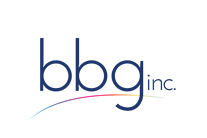The value of SharedFunding is that it creates a gap between what you were paying for traditional insurance and what you pay with SharedFunding.
Unfortunately it’s typical for insurance costs to increase annually. However, we’ve found that by creating a gap with SharedFunding, that increase can be on less premium.
Traditional Insurance

You’ll be glad you brought it! Photo by Ricardo Resende on Unsplash
When you have traditional insurance, you need to buy the plan that you want to offer your employees. Makes sense, yes? The problem is that you are paying for this plan for every employee regardless if they use it or not.
The real benefit of insurance can be compared to an umbrella. You’ll be glad you have it with you when it downpours. Additionally, you’ll never mind when the sun comes out and you are carrying your umbrella.
At BBG, Inc., we’ve come up with a way to provide the protection of an umbrella at a fraction of the cost of traditional insurance.
SharedFunding
With SharedFunding, you can reduce the high premiums you are paying to the insurance company by buying catastrophic coverage. You are still buying an umbrella but just with a little more gap between you & the umbrella.
Typically we recommend purchasing the highest deductible available ($5,000, $6,350, $6,650). However, BBG will work with you to determine the appropriate amount of risk.
Then we’ll build out the plan that you want to promise your employees and deliver it to them. This is called SharedFunding:
- You buy catastrophic coverage from the insurance company
- Your annual premium costs go down ↓
- We deliver the plan you want to your employees
- It’s a promise to pay rather than buying from the insurance company
But won’t we fund the difference back in claims?
Healthcare is used unevenly and in the 14 years we’ve been doing ShareFunding, no client has ever funded back the entire premiums savings in claims.
Here is a simple example:

Things are starting to look up. Photo by Jude Beck on Unsplash
Let’s say that traditional insurance costs you $1.00 (haha, I know what world do I live in?? Just trying to keep it simple).
BBG comes in and recommends you buy the highest deductible possible for $0.60. Right now things are looking up as you’ve reduced your healthcare costs by 40%.
The next step involves building the SharedFunding plan you would like to promise to your employees. BBG can build any type of ShareFunding plan you’d like. Most employers choose to mimic their former traditional plan. This way employees still get the same benefit they are used to receiving.
Most likely you’ll end up funding approximately $0.20 in claims for employees who utilize the SharedFunding plan.
That brings your final cost up to $0.80 for a 20% savings. Not too bad, eh?
The Compound Savings of ShareFunding
Saving 20% on your healthcare costs when you initially set up SharedFunding is lovely, yes? But what makes it even lovelier is what happens in the years to come.
Since pictures speak 1,000 words, let me explain with a graph:

Here at BBG we tend to look at the average cost per employee per year as a benchmark. The reason is that your enrollment fluctuates each year. You can calculate your average cost per employee per year by taking your total costs divided by your current enrollment.
The above graph includes numbers from a real client who has been SharedFunding since 2012.
As you can see their average cost per employee per year were at $15,197 with traditional insurance in 2012/2013. By switching to SharedFunding that year, we were able to reduce that number by 39%. Whoa!! Then in 2014/2015 they embraced a more robust form of SharedFunding and reduced their cost another 21%.
While we are pretty good, we are not magical. Unfortunately, you’ll notice their healthcare costs did rise through the years with SharedFunding. However, the true value of SharedFunding is that your increases are on a smaller premium amount; hence, the compound savings of SharedFunding.
To show this we assumed they would have received a trend increase of 5% each year if they had stayed on the traditional route. Based on past renewal trends, this was an appropriate average increase to assume.
Firstly, they are not even close to what their average cost per employee was in 2011/2012. Secondly, while both graphs go up the gap between them grows!
Closing Thoughts
Healthcare is likely one of your biggest expenses as an employer. The math of self-funding may not work for small employers, but the math of SharedFunding most likely will. Here are BBG, we have fun delivering strong benefits to your employees while reducing the amount of premium you pay to the insurance company.
Your employees will still have access to the network that the insurance carriers provide. Additionally, you will be protected from catastrophic claims with a mini stop loss in purchasing a high deductible plan from the carrier. Furthermore you can deliver the same benefits to your employees by promising to fund. Lastly, with a promise to fund, you, the employer, will be able to retain more dollars in your business.
If you are interested in seeing if SharedFunding might be a good fit for your company, don’t hesitate to reach out to us for a no obligation analysis.
Lastly, we will be running a series on SharedFunding and in this series we plan to get into the details on a more granular level.
